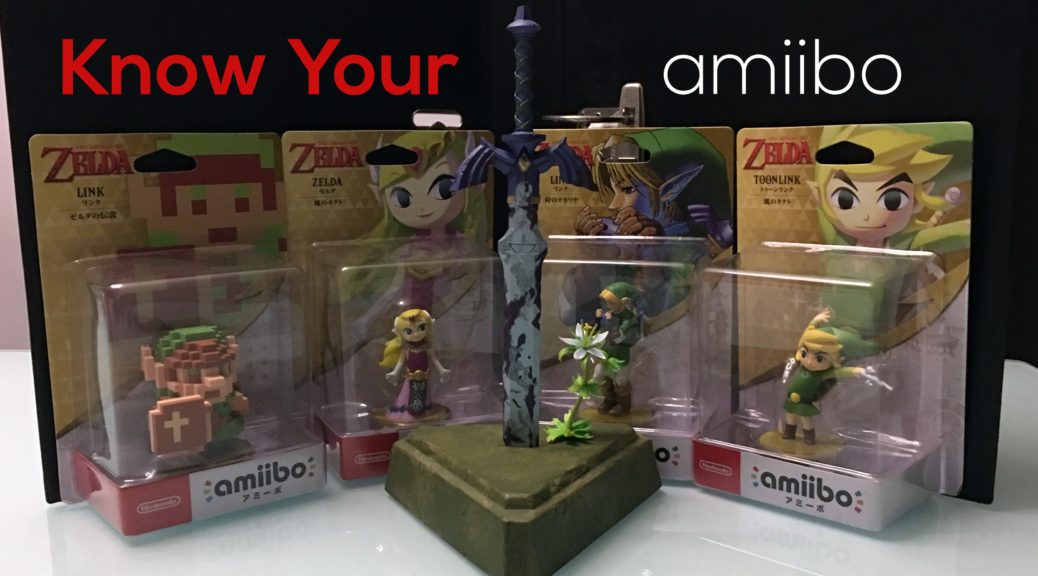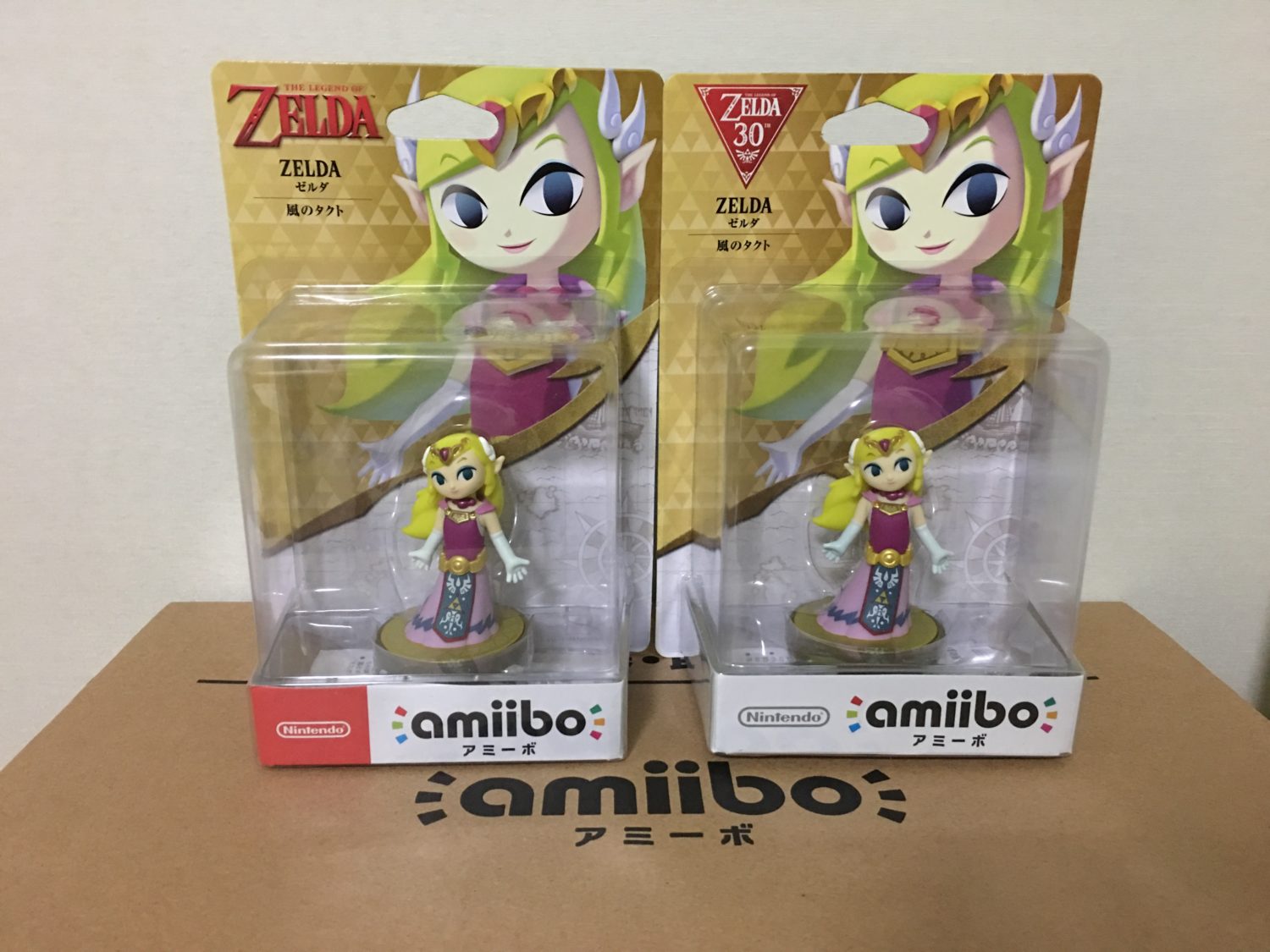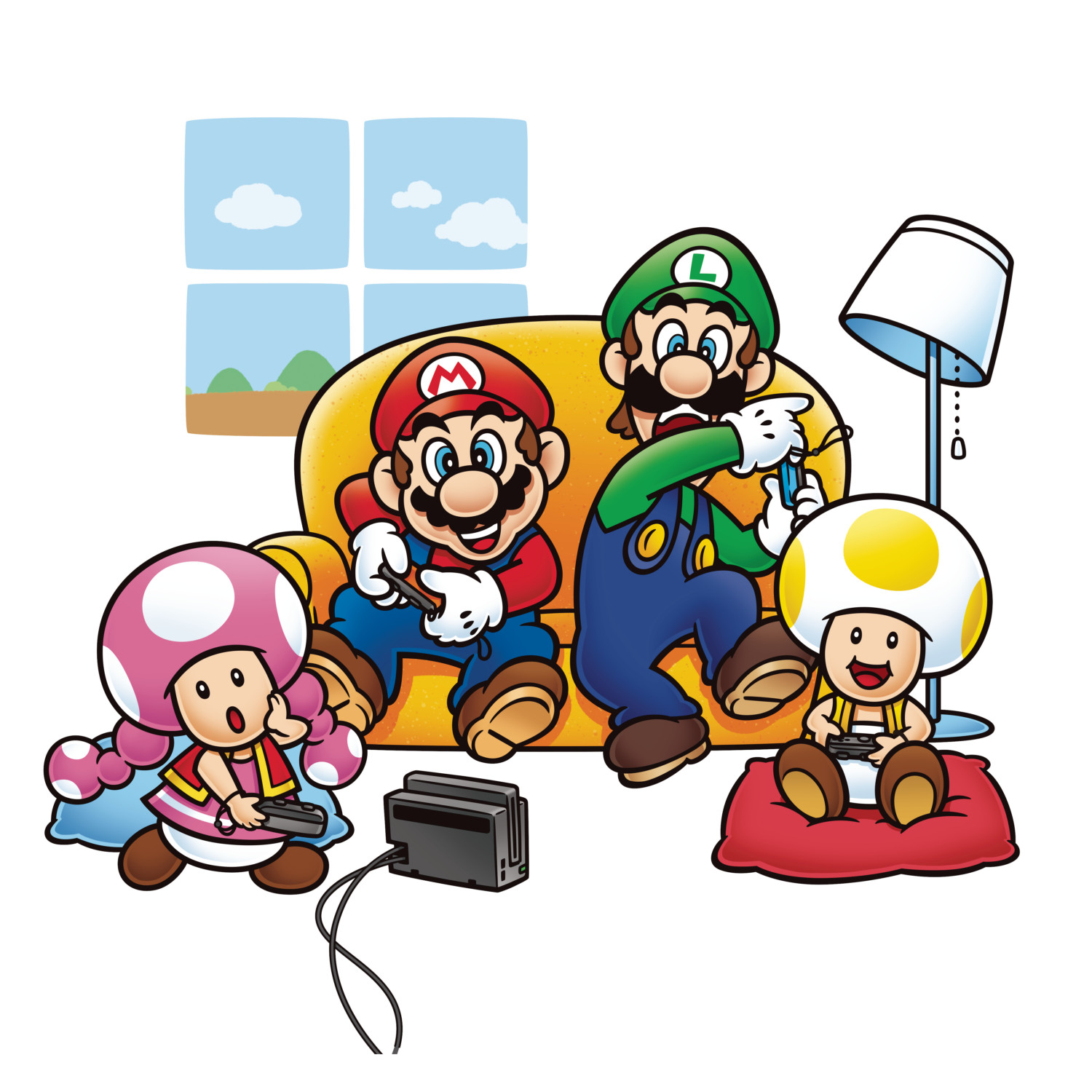
Know Your amiibo: The Legend of Zelda 30th Anniversary Reprint Differences
In this week’s know your amiibo, we take a look at The Legend of Zelda 30th Anniversary amiibo figures’ packaging difference, more specifically that of 8-bit Link, Ocarina of Time Link, Toon Link and Toon Zelda.
Some of you may know, I’m an avid amiibo fan. Having collected one of each amiibo figure, I’ve seen the amiibo line grow, run out, reprint and stagnate on shelves. The first wave of Legend of Zelda 30th Anniversary amiibo figures is no exception.
First announced in September 2016, even before the Nintendo Switch was teased, the Legend of Zelda 3oth Anniversary amiibo’s packaging was designed with the Wii U in mind. On the back, the packaging focused on then existing Wii U games like Twilight Princess HD, Super Smash Bros. for Wii U/3DS and Hyrule Warriors with no mention of the Switch.
Months passed, and 30th Anniversary amiibo figures flew off the shelves, Nintendo found themselves needing to reprint the figures to appease the fans. By then, the Switch had already been released, along with Breath of the Wild. The critically acclaimed game drew praises from everywhere and Nintendo sought to put Breath of the Wild front and centre on everything. This is obvious on the 30th Anniversary Zelda amiibo reprints.
On the back of the reprints, The Legend of Zelda: Breath of the Wild takes the place of the previously featured Wii U games. The Nintendo Switch also takes its place on the roster of compatible consoles, sandwiching the dead Wii U against the Nintendo 3DS. On the front, the white-backgrounded Nintendo Logo has been switched to the red-backgrounded, keeping the refreshed red-backed logo consistent across products and marketing. Not just that, the 30th Anniversary Celebration logo has also been changed into the more conventional The Legend of Zelda one.
Implications
While some may think that the redesign is trivial in nature, it actually says a lot about Nintendo’s realignment of strategies.
The refreshed Red and White Nintendo Logo harks back to Nintendo’s Golden Age – during the era of NES, SNES and Gameboy. Though forward-looking, Nintendo has, in recent times, been looking back at their past and learning from it. The NES Classic is a fine example of Nintendo trying to relive its glory days. More than ever, Nintendo has been banking on its classics to generate revenue in recent times.

However, more than that, the Nintendo Switch is a huge nod to all of the Nintendo Consoles that came before. As said during its announcement, Nintendo Switch is the culmination of Nintendo’s over 30 years of innovation. Like the Famicom, the Nintendo Switch came with two controllers. From the Super Famicom, the X, Y, L and R buttons took their positions. Then, learning from the Nintendo 64, the rumble and analogue control stick. Improved from the DS family, a touchscreen. From the Wii, motion controls. Even from the Wii U, the Nintendo Switch learned the off-TV play feature. The Nintendo Switch is Nintendo’s packet of innovation. A packet inherited from when the first took their steps into the harsh gaming industry, and the Red-White logo is a homage to it.
Speaking of the Switch, the Switch is Nintendo’s future. Breath of the Wild’s feature on the redesigned packaging is no coincidence. Nintendo could have inserted a few of the other compatible Zelda games for “Goodwill sake” but instead they chose to dedicate the whole area to Breath of the Wild, the Switch’s flagship title. While it is true that Breath of the Wild also launched for the Wii U, Switch copies of the game sold 4-to-1 against the Wii U version. To think that Breath of the Wild was originally developed for the Wii U.
In essence, the redesign of the amiibo reprint package signals Nintendo’s strive for relevance after losing 5 years to the Wii U.
Wrap up
The amiibo line now stands as one of Nintendo’s most flourishing products. It is a testament to Nintendo’s revitalisation. While it suffers the usual Nintendo ailments such as shortages, its popularity at a time where Nintendo’s future was uncertain stood as concrete evidence that Nintendo can still be relevant. As the century-old company takes its bravest steps in years to bring itself into the modern age, its reflection of its past and upbeat spirit of its future will keep the Nintendo spirit alive.








